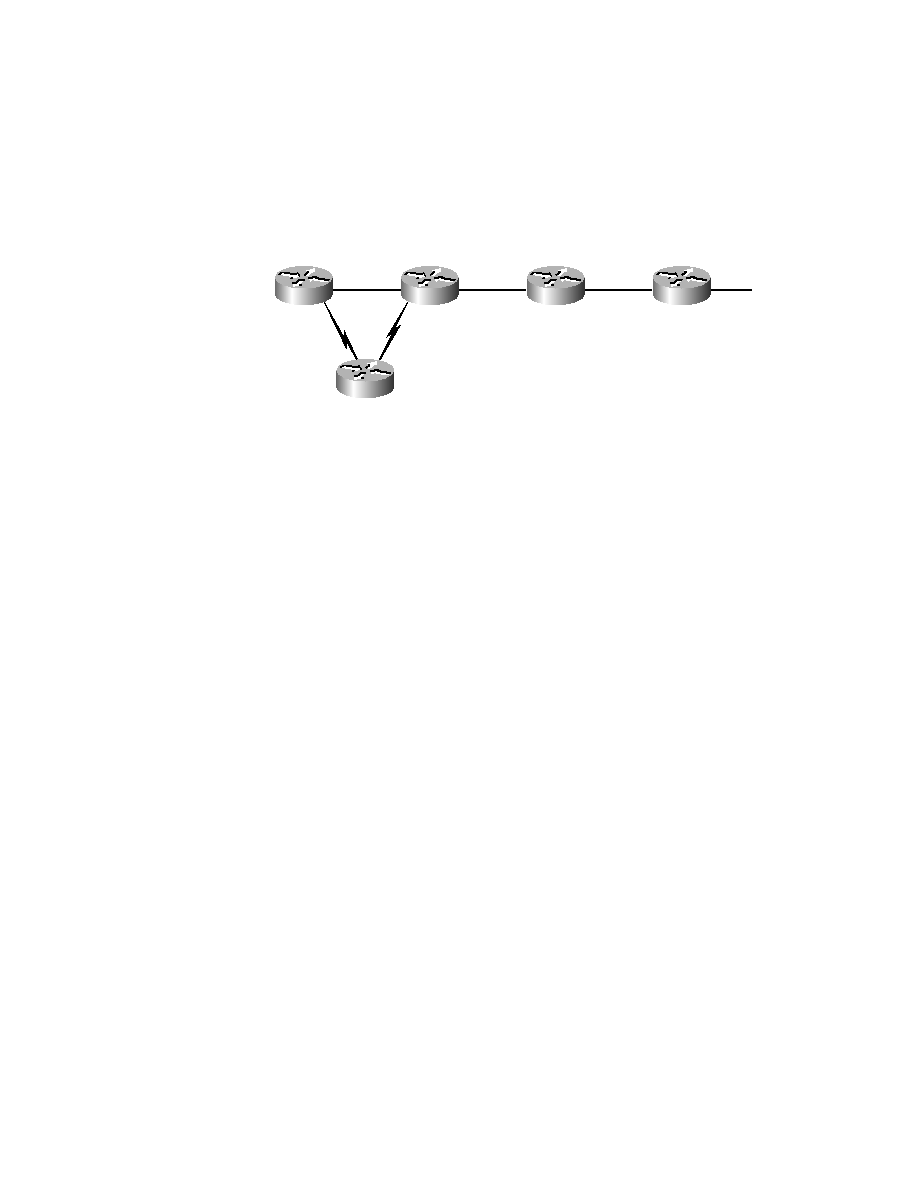
know about Network 5 yet, so they keep sending out update information.
Router C will eventually send out its update and cause B to stop routing to
Network 5, but Routers A and D are still not updated. To them, it appears
that Network 5 is still available through Router B with a metric of 3.
includes reachability for Network 5. Routers B and D then receive the won-
derful news that Network 5 can be reached from Router A, so they send out
the information that Network 5 is available. Any packet destined for Net-
work 5 will go to Router A, to Router B, and then back to Router A. This is
a routing loop--how do you stop it?
it's caused by gossip and wrong information being communicated and
propagated throughout the internetwork. Without some form of interven-
tion, the hop count increases indefinitely each time a packet passes through
a router.
16 hops is deemed unreachable. In other words, after a loop of 15 hops, Net-
work 5 will be considered down. Thus, the maximum hop count will keep
packets from going around the loop forever. Though this is a workable
solution, it won't remove the routing loop itself. Packets will still go into the